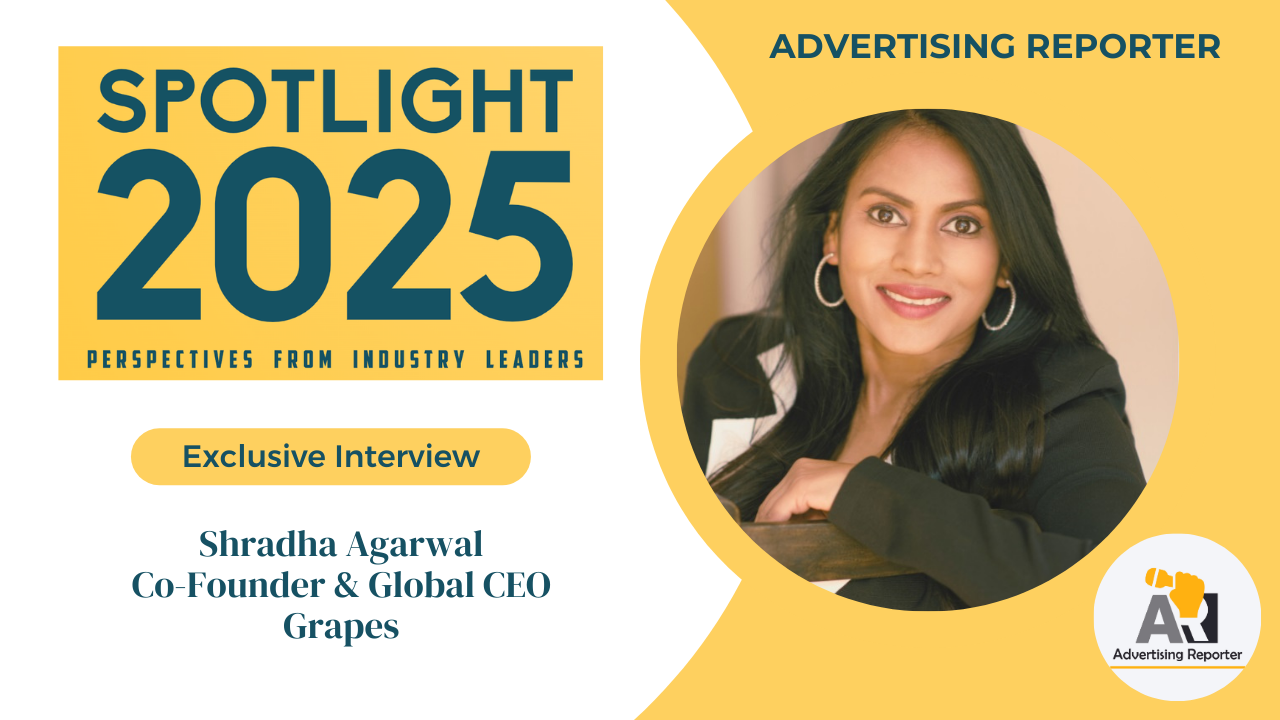● At this time last year, we were all discussing the impact and future possibilities of a cookie-less world. Are there any specific trends and market shifts you’d like to highlight that you think will be the major ones of the year?
Looking forward to 2025, it is anticipated that the year will be majorly dominated by AI-driven advertising. It will be invariably sought by the brands for managing the technology, creativity, and data analytics to drive the efficiency and performance of ads/campaigns. Along with this, a spike in omnichannel performance is expected for bringing about the perfect confluence of online and offline worlds. Brands are very likely to focus on experiential marketing by leveraging BTL and digital channels.
Delving deeper into it, billboards can see a spike in 2025, with an emphasis on digital campaigns augmenting offline, real-world events such as concerts, seminars, etc. on online platforms. Striving to bring about the concoction of physical and digital will steer the curation of immersive and interactive experiences, enabling brands to forge deeper connections with the audience.
● Many platforms and agencies have published reports on 2025, and every single one of them mentions Artificial Intelligence. Could you please shed light on the potential impact of AI in 2025, both for better and worse?
Given that AI has been making strong inroads into the sector, it is being invariably sought by the industry players to stay ahead of the competitive curve. Moreover, with the perennial upgradation and sophistication of the technology, the trend is expected to continue even in 2025. It will be leveraged more and more for employing personalized marketing and specific advertisement targeting. It can also come in handy for real-time ad optimization aimed at driving ad efficiency for ensuring it is well received by the target audience.
Allowing programmatic strategies based on the data collected, AI will support hyper-targeted content along with relevant product recommendations. In addition to this, the technology bodes well for delivering proactive solutions by predicting the future trends beforehand.
● What advice would you give to brands looking to stay ahead in the digital space in 2025 and make the most of the opportunities it presents?
In 2025, the industry will be on the lookout for more immersive experiences leveraging AR and VR. Focusing more on making the ads/campaigns interactive can help the brands engage at a deeper level with the audience. Along similar lines, brands can exercise an edge over others by coming up with more interactive touchpoints such as voice search, audio commerce, etc.
Tapping conversational messaging platforms such as Google RCS, WhatsApp Chatbots, to name a few, can come in handy for bringing about the desired result. Employing human-like interactions in chatbots and virtual assistance and incorporating natural language processing features into the chatbots can further go a long way in capturing the interest of the audience.
Moreover, with the integration of social media and shoppable content, the industry players should look forward to incorporating in-app shopping features into their ads. By embracing social commerce, brands can focus on curating engaging and shoppable content for capturing the attention of the growing audience and enhancing the purchasing process.
● Please enlighten us on the trends you see emerging, as media industry spending across various mediums is rapidly changing. Connected TV is projected to capture a larger share of media spending than any other medium in 2025. What factors do you believe are driving this shift?
Given the rising consumption of OTT content, audiences are readily flocking to platforms such as Disney+ Hotstar, Netflix, Amazon Prime Video, etc. This, in turn, has immensely contributed to the surging popularity of CTV in the country. It is estimated that CTVs will exceed 45 million households, projecting a CAGR of 17%. This comes with an immense opportunity for brands to exercise precision in ad targeting with CTV. This will require advertisers to innovate at the front of programmatic buying, advanced targeting, and immersive ad formats. The CTVs are expected to become the prime destination for advertisers to effectively reach and engage with consumers.
● How is 2024 different for the media industry? This is a year full of major events, and We’ve seen their impact on advertising. With events like the IPL, World Cup, Olympics, Euro Cup, and the ultimate election year—where 64 countries are holding national elections—how do you think these factors are shaping the media landscape?
With 2024 being an eventful year, the advertising and marketing industry benefitted immensely from it. Such events provide the playground for enhancing brand building by leaving behind a lasting impression on the audience. It provides them with high-impact platforms for developing strong connections with the audience. Increasing the visibility, it can improve the recall value of the brand among the target audience. Moreover, with so many events taking place in a year, it gives flexibility to the brands to select the event that will gain them maximum traction. It gives an opportunity to strategically optimize and allocate their ad spending for maximizing the output.
● What would be your guide to meeting the needs of millennials and Gen Z??
Understanding the consumer behaviour of Gen Z and millennials, depicting short attention spans, leveraging short-format videos can go a long way in tapping the audience. Additionally, given that the generation is always on the lookout for extraordinary, bizarre marketing is expected to pique the interest of the particular audience. Fixating their attention with unconventional, random, but unique content, the form of marketing comes with the ability to create a lasting impression on the millennials and Gen Z audience. Taking, for instance, the virality of Ganji Chudail, it is the perfect example of bizarre marketing that is quite popular among this particular audience.
